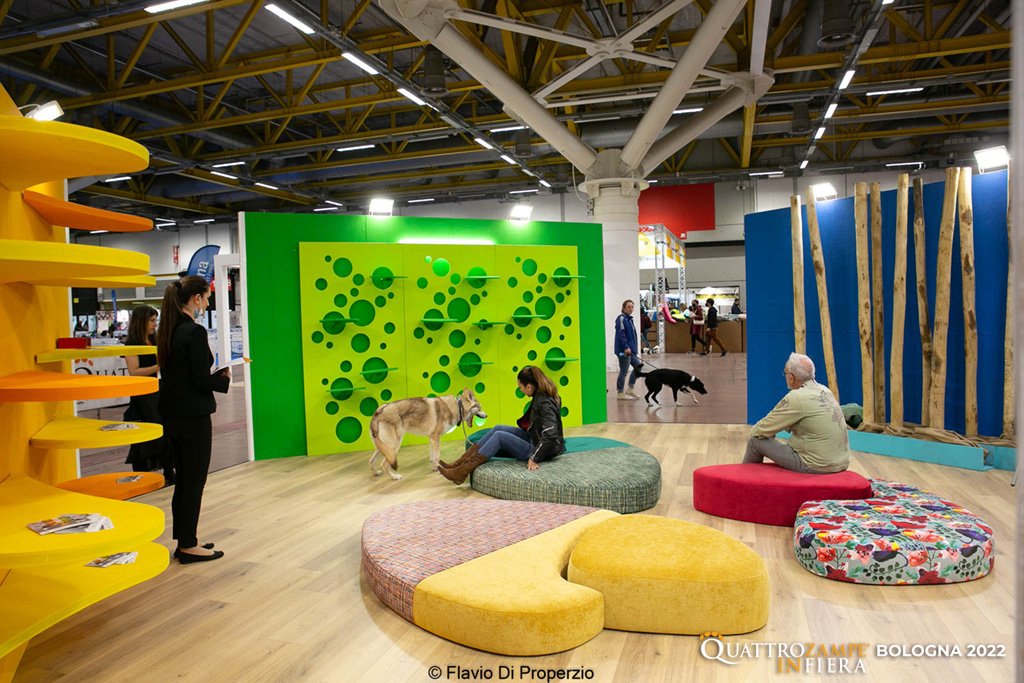
The Tactile Garden
The HAD Human Animal Design of Amelia Valletta with Marco Maggioni.
If tactile stimulation is essential in the human learning process, it is even more so for animals. Inspired by the tactile forest of Bruno Munari, who supported the need to help children grow by developing all their senses, so as not to lose their sense of life, the Tactile Garden invites the visitor to reflect on the need to rethink the domestic space, making it more suitable for dogs and cats. A house that is more attentive to the species-specific characteristics of the animal, its needs, which favors adaptation in a built environment that is very different from its natural habitat.
The Tactile Garden consists of 4 sections made with tactile materials that encourage greater involvement of the senses, with surfaces designed to enrich the perceptive and cognitive experience of animals.
The blue wall in jute canvas and piling in raw chestnut wood is one of the three original sections dedicated to the cat, its curiosity and the kinesthetic, playful and zenithal dimensions that distinguish many of its behaviors, such as climbing, climbing, climbing, scratching -mark, look unnoticed, and of course, find a refuge away from the chaos.
At the center of the installation we find the “meanders”, giant sofas with organic shapes, where man and dog can lie down together on the ground and strengthen their relationship through rituals of proximity, affection and affiliation, sharing spaces and resources. A place of coexistence where man welcomes the animal’s point of view, tending to take a less anthropocentric position, more attentive to the needs of the other and to his otherness.
Through specific or more widespread interventions, The HAD works on the environmental qualities of architectural spaces, in terms of capacity, articulation, furnishings, fittings, materials, with interventions that can be scaled according to the identified needs.
The HAD method demonstrates how a well-designed space can positively impact the animal’s behavior and its psycho-physical balance, encouraging adaptation to the domestic space and generating new opportunities for expressive ease, in line with its talents and desires.
Concept and Design: Amelia Valletta and Marco Maggioni
Keywords: inclusive design, zoo anthropology, social impact, pet design, perceptive, wellbeing, ethology.


